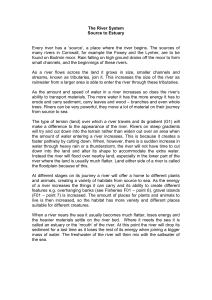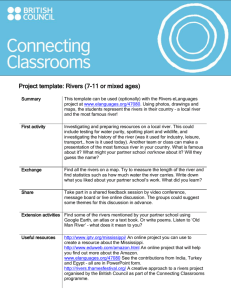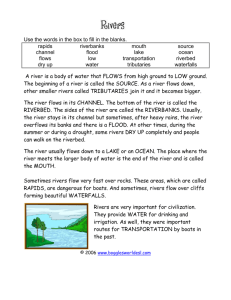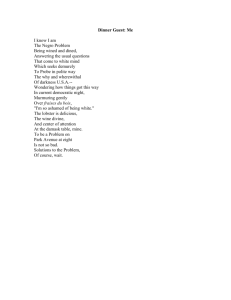The Nile River on a Map
advertisement
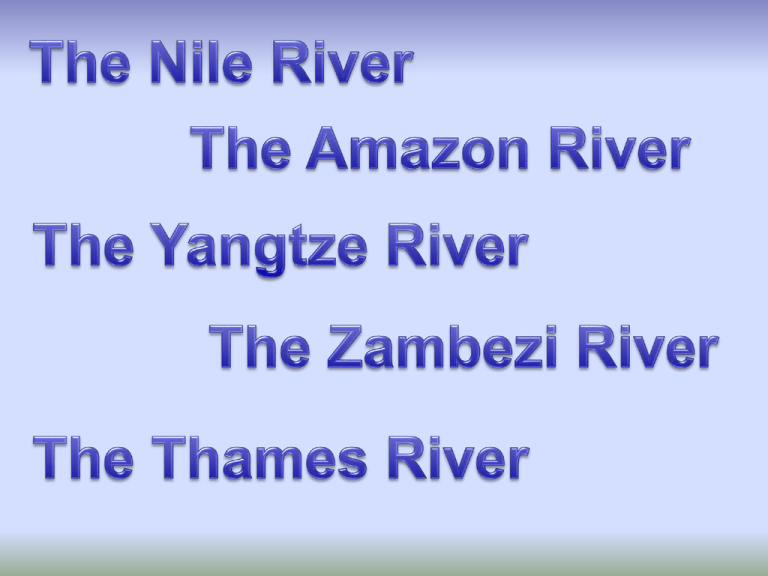
A river is a large stream of fresh flowing water, usually emptying into the sea. High in the hills or mountains, small streams gather to form a river. It flows in a channel. The Nile River is the longest river in the world, stretching for 6,695km. The Nile has three major tributaries and it flows through ten independent nations: Egypt, Sudan, Rwanda, Uganda, Tanzania, Zaire, Ethiopia, Kenya, Eritrea and Burundi. The Nile River on a Map A tributary is a stream or river which flows into another river (a parent river) The source of a river or stream is the original point from which the river flows. The Amazon River is 6,437km long. Calillona, Peru is the source. The Amazon River is the world's second longest river. Only the Nile, in Africa, is longer. The Amazon however, at any one point in time has the highest amount of water flowing down it. No other river even comes close. It may not be the longest, but it is the widest. The Yangtze River is the longest river in Asia and third longest in the world. The river has over 700 tributaries and measures 6300km. The Amazon rainforest is the home of over 300 species of mammals, thousands of freshwater fish, tens of thousands of trees and nearly a hundred thousand other plants. The Amazon is home to the piranha, one of the world's most terrifying fish. Up to 60 cm long, piranhas hunt in shoals, or packs, and can kill cattle or humans and strip the flesh from their bones in a few minutes. The Jaguar is the largest member of the cat family outside Asia and Africa. An Anaconda at rest. When it is hungry, it will uncoil itself and lie still in the water with only its eyes above the surface, waiting for prey. The Zambezi is in Africa and it measures 2,736km. It originates in north western Zambia, formerly Rhodesia, and flows through Angola, Botswana, Zimbabwe, and finally to Mozambique. Here it empties into the Indian Ocean. The most spectacular spot along the river is in Zimbabwe at Victoria Falls which is one of the Seven Wonders of the World. The Zambezi River is widely used by wildlife and humans alike. Hippos, crocodiles, baboons, elephants, hyenas and lions are some examples of wildlife you might find along the Zambezi The Thames is the river at the heart of English and British History. It is fairly short by world standards, only 346km long from its beginning at Thames Head to its end at the lighthouse at Nore. The Thames is actually the combination of four rivers, the Isis, the Churn, the Coln and the Leach. Rivers have always been important for travel, transportation and trade. A coal barge on the Ohio River Most settlements were built along major rivers. Rivers are important for farming Rivers are also important for farming because river valleys and plains provide fertile soils. Farmers in dry regions irrigate their cropland using water carried by irrigation ditches from nearby rivers. Rivers are also an important energy source. Poland, Czorsztyn (Niedzica) hydroelectric power plant During the early industrial era, mills, shops, and factories were built near fastflowing rivers where water could be used to power machines. Today steep rivers are still used to power hydroelectric plants and their water turbines.
